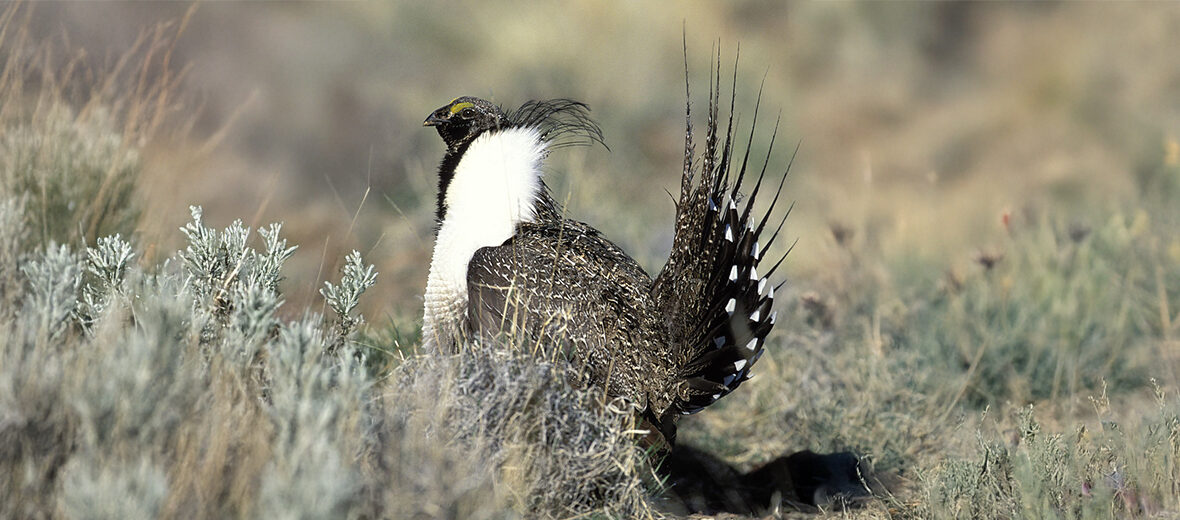
The Gunnison sage-grouse, Gunnison grouse, lesser sage-grouse, or sagehen, hails from the United States. While being a permanent resident in its breeding grounds, they are known to move to lower elevations during the colder winter months to avoid the cold. These grouse face many threats such as habitat loss and destruction at the hands of residential and commercial developments, farming, ranching, oil and gas drilling; while roads and railroads divide their territory and can cause vehicle strike – being hit by vehicles; hunting; trapping; and climate change, that can result in droughts and extreme temperatures. With these threats and a decreasing population, the IUCN lists these grouse as Endangered.
First the Stats…
Scientific name: Centrocercus minimus
Weight: Up to 5.37 lbs.
Length: Up to 22.1 inches
Wingspan: Up to 29.92 inches
Lifespan: Up to 3+ years
Now on to the Facts!
1.) Being officially described as their own species in 2000, these grouse were the first new avian species to be described from the USA since the 19th century.
2.) The Nature Conservancy installed approximately 750 one-rock dams to increase water retention and enrich the habitat conditions for these grouse in a protected area.
3.) While once found in Arizona, New Mexico, and Oklahoma, they are now extirpated in those states. They now only currently exist in Colorado and Utah.
4.) Sagebrush leaves, buds, flowers, forbs, and insects are all on the menu.
5.) Golden eagles, coyotes, bobcats, ravens, foxes, weasels, ground squirrels, badgers, crows, and magpies all prey on the chicks, eggs, and sometimes adults.
But wait, there’s more on the Gunnison sage-grouse!
6.) Breeding takes place in late February – April.
7.) Noted for their elaborate courtship rituals, males congregate in leks (a gathering of male birds that strut, dance, and/or sing to show off for females) and perform a “strutting display” to woo a mate.
Did you know…?
There are only approximately 3,500 wild breeding pairs remaining to date.
8.) Groups of females observe these elaborate displays and select the most attractive of the males to breed with.
9.) Females lay up to 8 eggs that hatch in up to 27 days.
10.) There is a high rate of nest desertion and nest predation.
But wait, there’s still more on the Gunnison sage-grouse!
11.) Gunnison sage-grouse are primarily diurnal (active during the day), with some crepuscular (active at dawn and dusk) activity.
12.) These birds are totally dependent upon sagebrush-dominated habitats. Sagebrush is a critical component of the adult’s diet year-round, and they choose sagebrush almost entirely for cover.
Now a Short Gunnison Sage-Grouse Video!
Be sure to share & comment below! Also, check out the Critter Science YouTube channel. Videos added regularly!
Want to suggest a critter for me to write about? Let me know here.
Some source material acquired from: Wikipedia & IUCN
Photo credit: Gary Kramer




